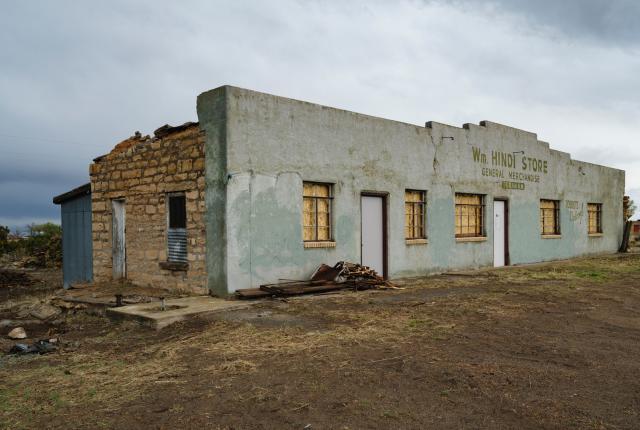Duran might look like a ghost town, but community members have plans for preservation. Photograph by Andrew Kornylak.
Read up.
Web searches yield a host of info on older towns, along with recommendations for book learning. Those empty buildings will speak volumes when you know more about what happened inside.
Be friendly.
Someone may ask you why you’re visiting, and if you already did some homework and happen to know who used to run the old general store, you’re likely to learn even more.
Show some respect.
Many ghost towns are still someone’s home. Don’t take pictures of people or occupied houses without asking. Obey all no-trespassing signs, leave those “cool artifacts” behind, pick up your trash, and—do we really have to say this?—don’t vandalize anything.
Take care.
Old mines can collapse. Neighbors could be justifiably suspicious. Abandoned buildings might hold asbestos, varmints, and rotting floorboards.
Buy good maps.
DeLorme publishes a New Mexico atlas with 72 pages of maps that include back roads, campgrounds, and landownership. The U.S. Forest Service and Bureau of Land Management also have maps that show former mining camps and the like, along with where public lands end and private property begins. (Don’t count on your cell phone to show you the way, especially in rural and mountainous areas.)
Go slow, enjoy yourself.
Everything will take much longer than you expected. Forget about racing to the next town. Devote a weekend here and there. Begin to love quiet moments and the rich stories of the places you find.
Read More: This once booming mining town is now a bustling artistic village.


